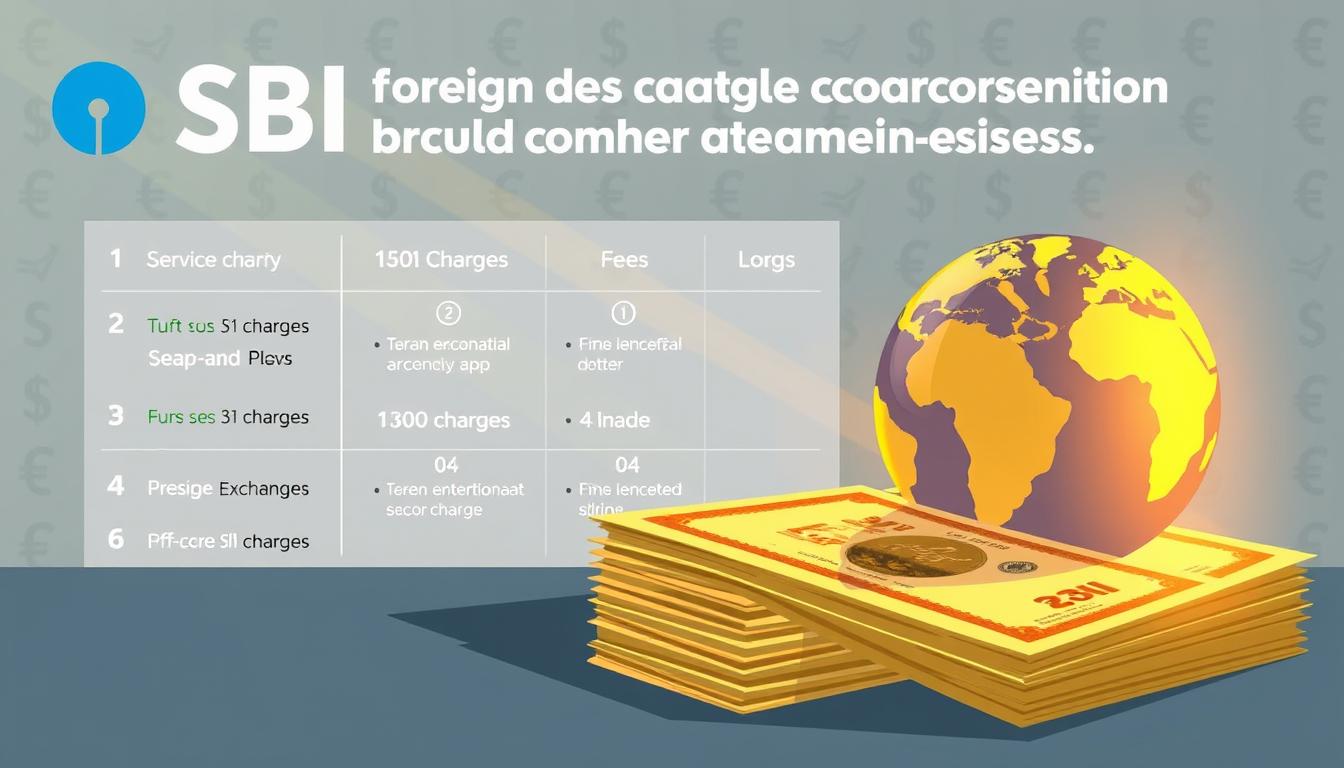Did you know that over 70% of forex transactions in India are facilitated by the State Bank of India? As one of the country’s largest financial institutions, it plays a pivotal role in helping individuals and businesses manage their currency needs. Whether you’re sending money abroad or converting funds, understanding the fee structures is crucial.
The State Bank of India adheres to strict guidelines set by the Reserve Bank of India (RBI) and the Foreign Exchange Management Act (FEMA). This ensures transparency and reliability in its services. However, the costs associated with these transactions can vary, making it essential to compare them with mid-market rates.
For cost-conscious users, this article provides practical insights into how these fees are structured and what to expect when using SBI’s services. By the end, you’ll have a clearer understanding of how to optimize your forex transactions.
Key Takeaways
- The State Bank of India is a leading provider of forex services in India.
- Fees for currency conversion are influenced by exchange rates and regulatory guidelines.
- RBI and FEMA compliance ensures transparency in transactions.
- Comparing costs with mid-market rates can help save money.
- Practical tips are provided for users to make informed decisions.
Introduction to SBI’s Foreign Exchange Services
With roots tracing back to 1806, the State Bank of India has a rich banking legacy. Originally established as the Bank of Calcutta, it has grown into one of the largest financial institutions in the country. Today, it plays a vital role in facilitating international transactions and managing foreign exchange needs.
However, not all branches offer these services. Out of its extensive network, only 20,325 branches, primarily located in Tier 1 cities, are authorized to handle foreign exchange transactions. This ensures that customers receive specialized assistance in major urban centers.
To access these services, most transactions require the user to be an account holder. This policy ensures security and compliance with regulatory guidelines set by the Reserve Bank of India. Additionally, the bank supports a wide range of currencies, including USD, GBP, EUR, AUD, SGD, CAD, and AED, catering to diverse customer needs.
It’s also important to note that the RBI imposes an annual remittance cap of $250,000. This limit is designed to regulate cross-border transactions and maintain financial stability. By understanding these details, customers can make informed decisions when using the bank’s services.
Understanding SBI Charges for Foreign Exchange Conversion Services
Currency conversion involves more than just exchange rates; fees play a significant role. Whether you’re converting funds in person or online, understanding these costs can help you make informed decisions. Below, we break down the key components of these fees to provide clarity.
Transaction Fees
When converting currency at a branch, the fees vary based on the amount and type of currency. For example, larger transactions may incur higher costs. Additionally, GST is applicable on all service charges, adding to the total expense.
Online remittance, on the other hand, comes with a flat ₹250 processing fee. This is often a more cost-effective option for those looking to save on transaction fees. However, it’s essential to compare these costs with mid-market rates to ensure you’re getting the best deal.
Currency Conversion Fees
For those using travel cards, a hidden 3% cross-currency markup is applied. This fee is often overlooked but can significantly impact the total cost. It’s crucial to factor this in when planning your expenses abroad.
Understanding these fees and how they apply to different services can help you choose the most economical option. Below is a quick comparison of branch, online, and card fees:
- Branch Transactions: Variable fees based on amount and currency.
- Online Remittance: Flat ₹250 processing fee.
- Travel Card: 3% cross-currency markup.
How to Exchange Foreign Currency at SBI
Efficient currency exchange requires proper documentation and adherence to rules. Whether you’re visiting a branch or using online services, understanding the process ensures a smooth experience. Below, we break down the steps for both in-person and online transactions.
In-Person Exchange
For in-person transactions, you’ll need to visit an authorized branch. Ensure you carry valid ID proofs like PAN or Aadhaar for verification. Transactions above ₹50,000 require a cheque, so plan accordingly.
Here’s a quick checklist for in-person exchanges:
- Valid ID proofs (PAN/Aadhaar).
- Cheque for transactions above ₹50,000.
- Travel verification documents if applicable.
Physical currency must be used within 60 days, or it must be surrendered to the bank. This rule ensures compliance with regulatory terms.
Online Exchange
Online remittance is a convenient option for those with an account. The process is straightforward, but there’s a $25,000 USD cap per transaction. You can lock in the same-day rate, ensuring predictability in costs.
Key points to remember for online exchanges:
- Annual remittance limits apply.
- Same-day rate locking is available.
- Ensure all documents are uploaded for verification.
By following these steps, you can navigate currency exchange with ease and confidence.
SBI’s Foreign Exchange Rates
Understanding how exchange rates work can save you money on international transactions. The State Bank of India publishes daily rates, which are influenced by global market trends. These rates often include a markup compared to the mid-market rate, which is the benchmark used in interbank trading.
For example, in February 2021, the bank’s rate for INR to USD was ₹73.67, while the mid-market rate was ₹72.83. This difference of ₹0.84 per dollar resulted in a $15.66 loss on a ₹1 lakh conversion. Such markups highlight the importance of comparing rates before making transactions.
Here are key factors to consider when evaluating exchange rates:
- Daily Rate Publication: Rates are updated daily based on market conditions.
- Markup Analysis: Compare bank rates with interbank rates to identify markups.
- Historical Volatility: Rates can fluctuate significantly over time, so timing matters.
- Weekend/Holiday Surcharges: Higher rates may apply during non-business days.
- Bulk Conversion: Negotiate better rates for large transactions.
By staying informed about these factors, you can optimize your currency conversions and minimize unnecessary costs. Always check the latest rates and plan your transactions accordingly.
SBI Multi-Currency Travel Mastercard
Managing multiple currencies while traveling can be a hassle, but the right tools make it easier. The SBI Multi-Currency Travel Mastercard is designed to simplify international transactions by supporting up to seven currencies, including USD and CAD. This travel card offers flexibility and convenience for frequent travelers.
With a ₹100 initial load fee, users can start using the card immediately. It also comes with a $10,000 daily spend limit, making it suitable for both personal and business trips. However, it’s important to note that ATM withdrawals incur a $1.75 USD charge, in addition to any fees imposed by the ATM operator.
Card Fees and Limits
Reloading the travel card costs ₹50, which is competitive compared to other providers. This makes it an economical choice for those who frequently travel abroad. The card also supports seven currencies, allowing users to load and spend in their preferred currency without additional conversion fees.
However, inactivity for more than 12 months may result in penalties. To avoid this, ensure regular usage of the card. In case of loss or theft, the replacement protocol is straightforward, ensuring minimal disruption to your travel plans.
- 7-Currency Loading: Supports USD, CAD, and five other currencies.
- Reload Cost: ₹50 per reload, lower than many competitors.
- ATM Fees: $1.75 USD per withdrawal, plus operator charges.
- Inactivity Penalty: Applied after 12 months of non-use.
- Lost Card Replacement: Quick and hassle-free process.
By understanding these features and fees, travelers can make the most of the SBI Multi-Currency Travel Mastercard. It’s a reliable option for managing finances across borders with ease.
Remittance Services at SBI
Sending money internationally has never been easier with modern banking solutions. The State Bank of India offers robust remittance services, catering to both online and in-person needs. Whether you’re looking to send money India or abroad, understanding the options available can help you make informed decisions.
Online Remittance
For those who prefer digital solutions, online remittance is a convenient choice. The YONO app allows users to transfer funds with zero fees, making it a cost-effective option. Transactions are processed through IMPS or NEFT, ensuring quick processing times.
Key features of online remittance include:
- Real-time rate alerts: Stay updated on the best rates for your money transfers.
- Transaction tracking: Monitor your transfers from start to finish.
- Limits: A $20,000 CAD cap per transaction ensures security and compliance.
Branch Remittance
For larger transactions or those requiring in-person assistance, branch remittance is a reliable option. While fees may apply, the service offers personalized support and faster processing for high-value transfers.
Here’s what to expect with branch remittance:
- Documentation: For large sums, ensure you have valid ID proofs and transaction details.
- Cost comparison: Digital services often have lower fees, but branches offer added security for significant amounts.
- Third-party transfers: Limitations may apply, so confirm details with the bank.
By understanding these options, you can choose the best method to send money India or abroad. Whether you opt for online convenience or branch reliability, SBI ensures a seamless experience for all your money transfers.
Alternatives to SBI for Foreign Exchange
Exploring alternatives to traditional banking can lead to significant savings on international transactions. Digital platforms like Wise and Karbon FX offer competitive solutions with transparent fee structures and real-time rate tracking. These options are particularly beneficial for users seeking cost-effective and efficient money transfers.
For instance, Wise uses mid-market rates, saving users $15.66 on a ₹1 lakh conversion compared to traditional banks. This transparency ensures users get the best value for their transactions. Similarly, Karbon FX provides a multi-currency wallet, making it easier to manage funds across borders without hidden fees.
Here’s a quick comparison of key features:
- Real-Time Rate Tracking: Digital platforms offer live updates, ensuring users lock in the best exchange rates.
- Multi-Currency Wallets: Karbon FX supports multiple currencies, simplifying international transactions.
- Fee Transparency: Both platforms clearly outline costs, avoiding unexpected charges.
- NRI-Focused Services: Tailored solutions for non-resident Indians ensure seamless cross-border transactions.
For those comparing options, ICICI Bank’s charges range from 0.5% to 3%, plus GST, making digital platforms a more economical choice. By leveraging these alternatives, users can optimize their international transactions and reduce unnecessary costs.
Conclusion
Making informed decisions about international transactions ensures cost-effectiveness and compliance. Understanding fee structures, such as those for currency exchange, is essential to avoid unnecessary expenses. Regularly monitoring rates and comparing them with mid-market benchmarks can lead to significant savings.
Compliance with regulatory guidelines is equally important. Always verify documentation requirements and stay within annual remittance limits to avoid penalties. For those seeking efficient solutions, consider alternatives like digital platforms that offer transparency and competitive rates.
Ultimately, choosing the right services depends on your specific needs. Whether you prioritize convenience, cost, or security, evaluating options ensures you get the best value for your transactions.







